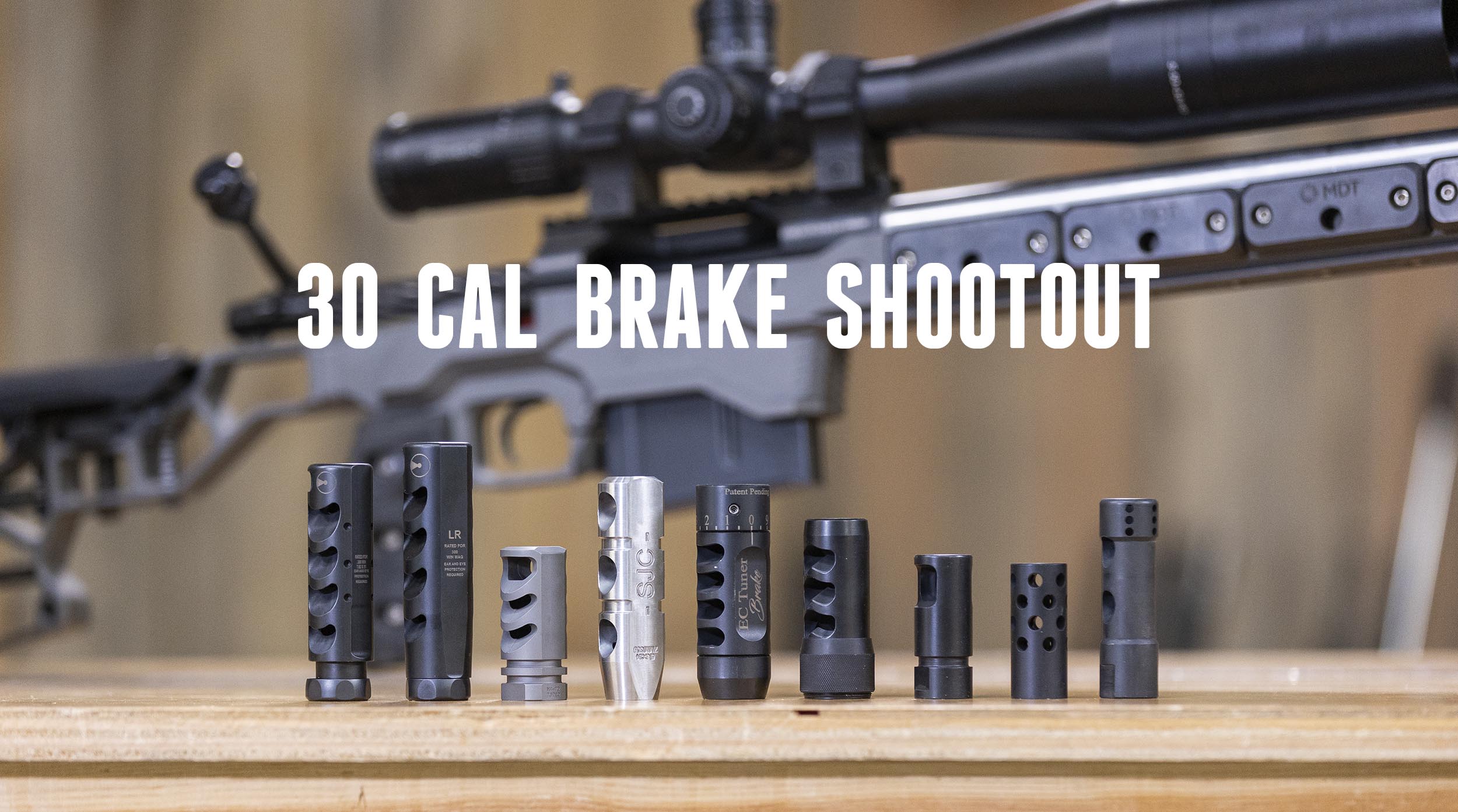This time we put nine 30 cal muzzle brakes to the test on the Ultimate Reloader high-tech recoil rig. Want to see what we found out?
Disclaimer
Ultimate Reloader LLC / Making with Metal Disclaimer: (by reading this article and/or watching video content you accept these terms). The content on this website (including videos, articles, ammunition reloading data, technical articles, gunsmithing and other information) is for demonstration purposes only. Do not attempt any of the processes or procedures shown or described on this website. All gunsmithing procedures should be carried out by a qualified and licensed gunsmith at their own risk. Do not attempt to repair or modify any firearms based on information on this website. Ultimate Reloader, LLC and Making With Metal can not be held liable for property or personal damage due to viewers/readers of this website performing activities, procedures, techniques, or practices described in whole or part on this website. By accepting these terms, you agree that you alone are solely responsible for your own safety and property as it pertains to activities, procedures, techniques, or practices described in whole or part on this website.
First Ever Ultimate Reloader Muzzle Brake Shootout
With the enhanced testing capabilities of our new recoil rig, I put all nine of the 30 cal muzzle brakes in the shop through a battery of tests.
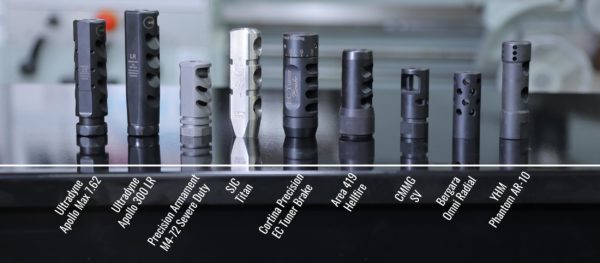
This is a very diverse collection of muzzle brakes. They all have different configurations, port counts, port designs, design details, and capabilities. This makes the list ideal for head-to-head testing.
The first thing I did was gauge each of the bores with pin gauges to determine bullet clearance.
Bore diameter measured with a pin gauge – .308 (bullet diameter) = bullet clearance
The EC Tuner Brake had the tightest clearance at 0.022 inches, followed by the Area 419 Hellfire, then the Bergara Radial OEM. The M4-72 severe duty topped off the other end of the spectrum with 0.06 inch clearance. Both of the Ultradyne Apollo brakes weren’t far behind with 0.058 inch clearance.
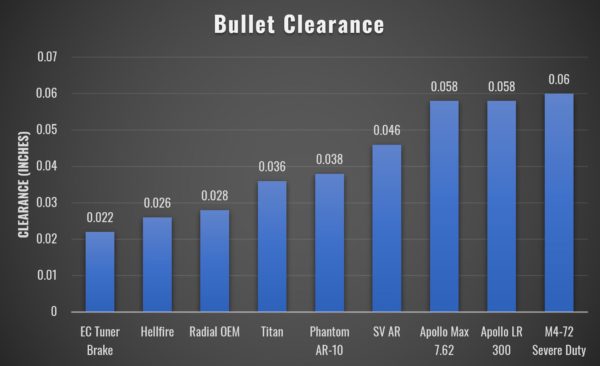
I’ll be covering the effect in a completely separate story, correlating bullet clearance with effectiveness in total reduction of recoil impulse and peak forces. I wanted to start here as it’s an interesting data point to collect.
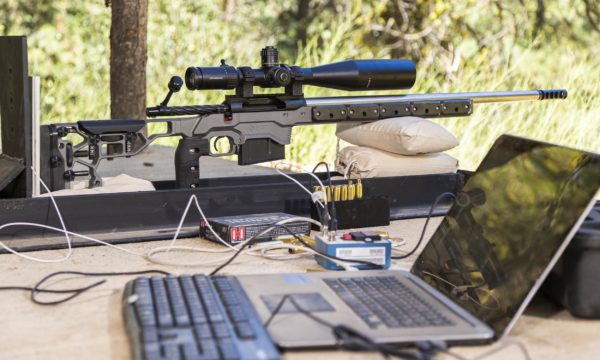
The Ultimate Reloader recoil rig is state-of-the-art — it measures forces at the buttstock at a rate of 20,000 samples/second. The total elapsed time can be 15 or 20 milliseconds total and you need lots of data points to produce a meaningful graph. This rig is able to do that. It provides instantaneous graphs of the forces and a true representation of the recoil over time. We also have new proprietary software I personally wrote to process and trim down the data to areas of interest and produce metrics for impulse, force, and time and other things we can use to compare performance of the brakes tested.
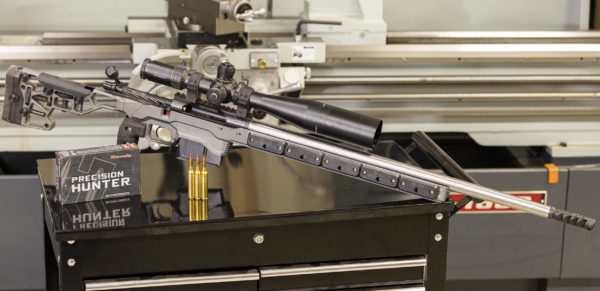
The test rifle is my 300 PRC full custom in an MDT ACC chassis with a weight kit. It’s currently sitting at 26 lbs. total weight. For this test, we’re using Hornady 212 grain ELD-X Precision Hunter factory ammunition. I’ve previously taken a deer with this rifle — check out my story, “Is 300 PRC too much for deer?”
The Test
Before adding any brakes, we started with the bare muzzle. Afterwards, we put each brake on the rifle and took one shot. We captured up to 100,000 data points for each of the runs. This gets trimmed to 1,000 data points total. One of the important things I did to enhance the system is I calibrated the output to lbs.-force. In prior videos, we compared the total difference in voltage to establish a percentage reduction in recoil. Now we can directly compare lbs.-force and calculate lbs.-second impulse.
After we collected all of the data, ran it through my proprietary software and graphed it, this is what we saw.
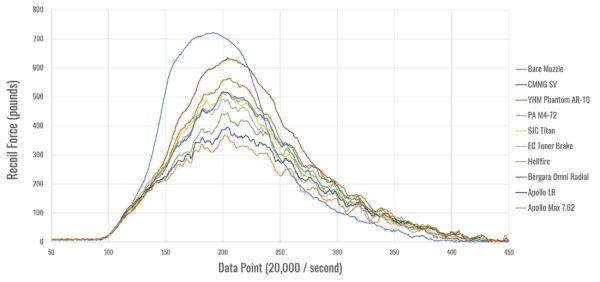
Unsurprisingly, the bare muzzle had the highest peak force. What was surprising is it had the shortest time duration.
Just below is the CMMG SV— this design isn’t super aggressive. It reduced the forces a little bit, but not like the others.
The best two were from Ultradyne, the Apollo Long Range and Apollo 7.62. The Apollo 7.62 outperformed the Apollo Long Range. Though these two had the largest bullet clearance, they have a very aggressive 4-port design.
You may also notice that the peaks all tend to line up, regardless of different manufacturers and different designs. I suspect this corresponds to the natural frequency of the chassis. This is especially important when considering accuracy and the dynamics of the barreled action in the stock. This speaks to just how precise the recoil rig and our data processing is.
Lined up for easy visual comparison are the peak forces in lbs.
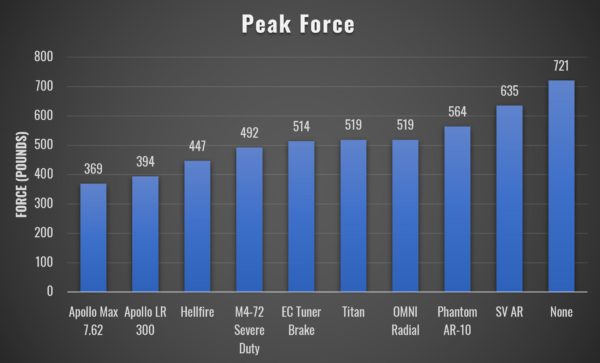
The bare muzzle produces 721 lbs. peak force. Though only for 5 milliseconds or so, that is still a rather sizable quantity of recoil. Think about what this would be for a lighter rifle! The Apollo Max 7.62 almost cut this in half!
Elapsed time (seconds) was also interesting.
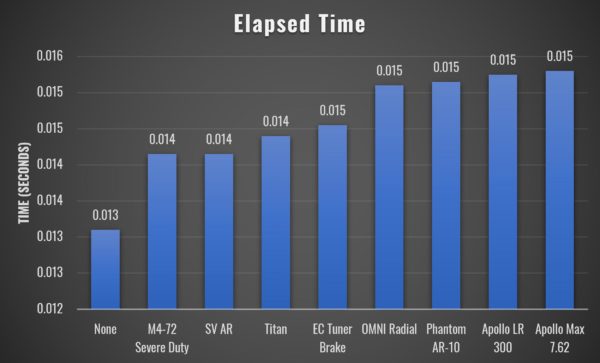
Time varied from 0.013 seconds (bare muzzle) to 0.015 seconds (several brakes). Though a very short amount of time, with 721 lbs. peak force you’ll definitely be able to feel it.
To capture the entire recoil event, you need to look at impulse. The new software I wrote allows us to capture this.
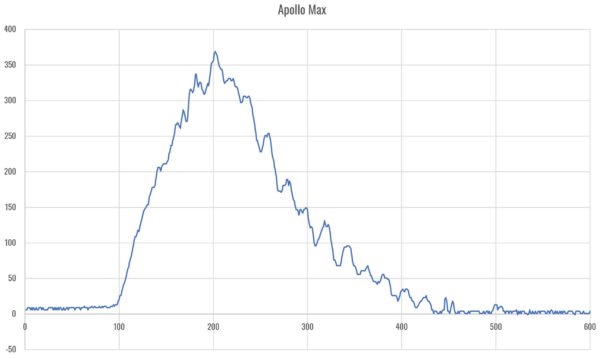
After some sort of a trigger, we start increasing our forces. For every time increment we multiply the time increment by the lbs.-force and sum up all of the areas that are calculated. The sum of these small strips gives us a good approximation of the total impulse.
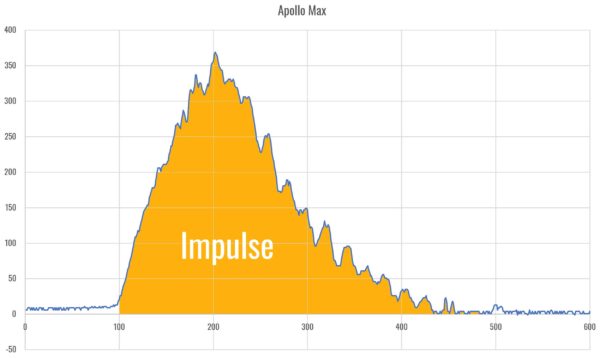
The recoil impulse increases in the same order as the peak forces with the exception of the SV AR brake. We actually had slightly higher impulse with the SV AR than we did with the bare muzzle. Though the SV AR did reduce peak forces, the total impulse was slightly higher. If you stretch out lower forces over a longer period of time, it feels more like a long push than a sharp poke, so it will reduce the felt recoil at your shoulder.
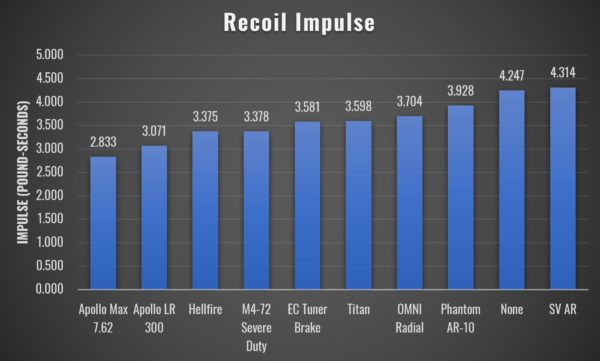
The Apollo Max 7.62 had 48.8% reduction in peak force. The Apollo LR 300 followed close behind at 45.4%. The Hellfire came in third at 38% reduction.
Returning to the SV AR, it had the lowest reduction in peak force at 11.9%.
Conclusion
This test marked the ability to specifically quantify how the forces were reduced. The greatest surprise is that the high-clearance brakes performed the best. I speculate that reducing the clearance just slightly may even improve performance. It was also interesting to learn that peak force reduction and total impulse correlated well with the exception of the SV and bare muzzle.
In the future, I’ll be investigating how well a compensator works, muzzle rise, testing sound levels, and conducting a 5.56 muzzle brake shootout! Compensators and muzzle rise are a completely different phenomenon as you don’t care about the upward forces because you don’t feel that in your shoulder. What really matters is sight picture disruption.
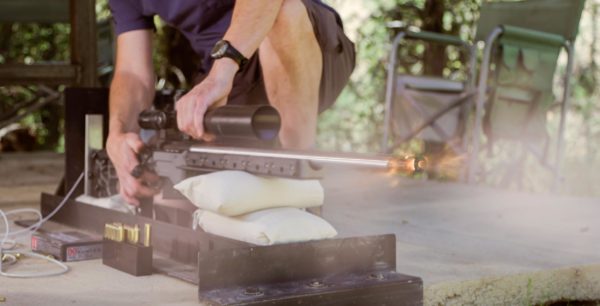
There are nearly endless opportunities for investigation. Consider comparing the max load for one cartridge to another or determining the effect of bullet weight at max charge on recoil? What about varying powder weight? Does increasing the charge 10% increase the forces 10%?
Get the Gear!
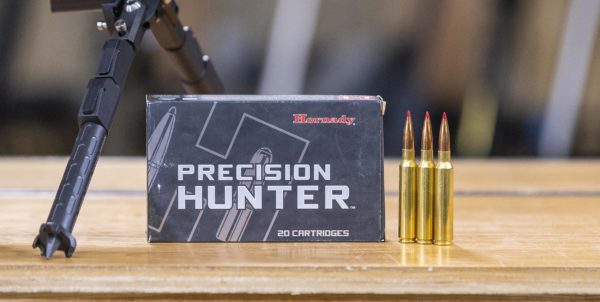
Hornady 300 PRC 212 Gr. ELD-X Precision Hunter Ammunition
Precision Armament M4-72 Severe Duty
Cortina Precision EC Tuner Brake
CMMG SV
YHM Phantom AR-10
Don’t miss out on Ultimate Reloader updates, make sure you’re subscribed!
Thanks,
Gavin Gear
